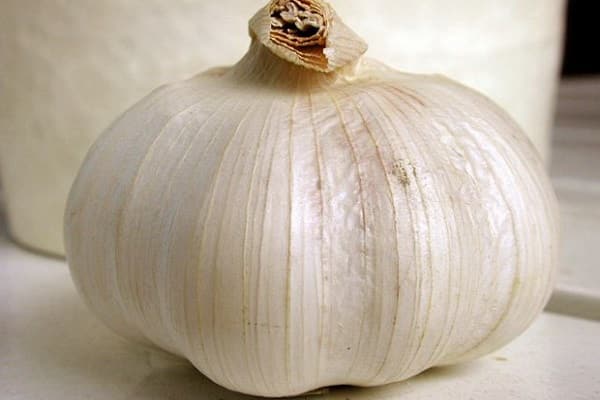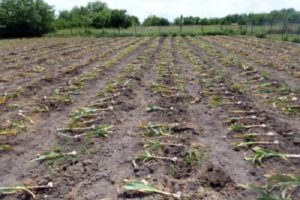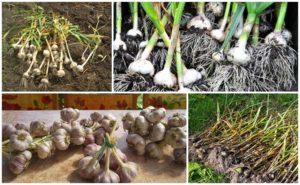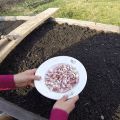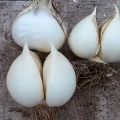Description of the azure garlic variety, features of cultivation and care
Among professional gardeners among vegetable crops, winter garlic is one of the most significant. Antiseptic actions and stable yield of the variety are the main components of its demand. The arrowhead variety is versatile, as it is suitable for use in various dishes and for long storage.
Description of the variety
The variety belongs to the mid-season and is intended for cultivation in summer cottages and household plots. The leaves are light green with a weak waxy bloom on the surface, reaching 53 cm in length and 1.9 cm in width. The bulbs of the shooting variety are round-flat and weigh about 60 g. The number of cloves in each head is 5–6. The structure of the cloves is simple.

The outer color of the bulb scales is dominated by lilac-violet shades and anthocyanin streaks. Leathery scales are brown. The flesh is white and has a pungent taste. The average yield of Lazurny garlic is about 0.7 kg / sq. m.
Growing
To increase the fertility rate, before planting garlic, it is necessary to properly prepare the soil. First, you need to dig up the ground and treat it with copper sulfate to saturate it with nutrients. A couple of weeks before sowing, compost and fertilizers (sulfuric potassium, superphosphate) must be added to the soil.

This variety should be grown on beds no more than 20 cm high and up to 1 m wide. Plants on such beds will not be saturated with moisture and will warm up better from the sun. The growing period is calculated in such a way that 1–1.5 months remain before the onset of frost, and the soil at the time of sowing has cooled to +10 degrees.
Suitable dates for planting Azure Garlic are mid-April - early May, or late September - early October.
Care features
The first descents of the Winter variety appear at an early stage, therefore, after the snow melts, nitrogen fertilizers must be applied at a rate of 10-15g / sq. m. For the entire ripening period, the garlic is treated twice with full mineral fertilizer. The first fertilizer is applied at the beginning of growth, the second - after a month. For additional feeding of seedlings, ash can be added at 0.5 l / sq. m.

If the garlic is planted in the spring, it will be much easier to distribute the care work. You only need to remove coarse mulch from the beds, if it was used for insulation, loosen the ground, remove weeds and apply fertilizers. Due to melt water, the soil will be saturated with moisture necessary for the growing season. Planted Azure garlic needs much less watering than other varieties.
At the initial stage of growth, the shoots actively grow and by all parameters bypass weeds.This allows you to weed the seedling beds less frequently. When forming 7–8 leaves, the plant independently suppresses the emerging weeds, which saves time on weeding the earth.
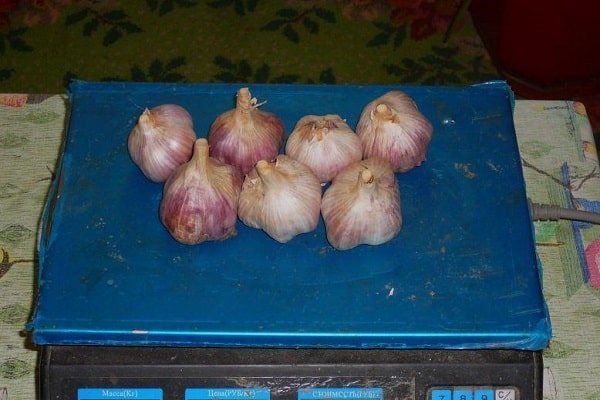
Advantages and disadvantages
Face flaws growing garlic can only be inexperienced summer residents who make mistakes when caring for plants. Subject to the rules of care, the grown crop will have the following advantages:
- Large bulbs. Compared to other common varieties, Azure Garlic has larger chives.
- Variability of use. Due to its special taste and aromatic characteristics, the culture is suitable for fresh consumption, in pickles and various dishes.
- Storage duration. The bulbs of the plant can be stored without deterioration for 6 months, without requiring the creation of special conditions.
- Yield stability. With the constant planting of one variety, it is possible to collect large volumes of the crop.
- Undemanding care. To maintain plant growth, it is enough to follow the list of standard rules (watering, loosening, weeding, fertilizing).
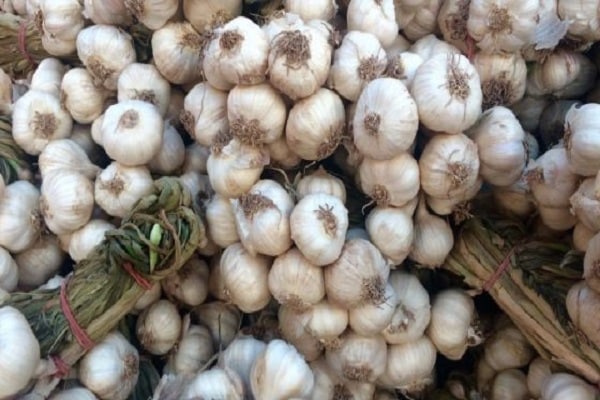
Pests and diseases
Garlic is exposed to diseases and damage from pests more often than other vegetable crops. The main pests of the plant are stem nematode and root mite. There are own methods to combat each of the listed insects.
If a stem nematode is found in the garden, it is necessary to add an admixture of peat and coarse sand to the soil. Before each next planting, the soil should be treated with a solution of sodium chloride to prevent the occurrence of new worms. If the garlic has been infected with a mite, then this can only be detected after collection, so the rotten heads will have to be thrown away, and the ground should be treated with a disinfectant to improve the next plantings.
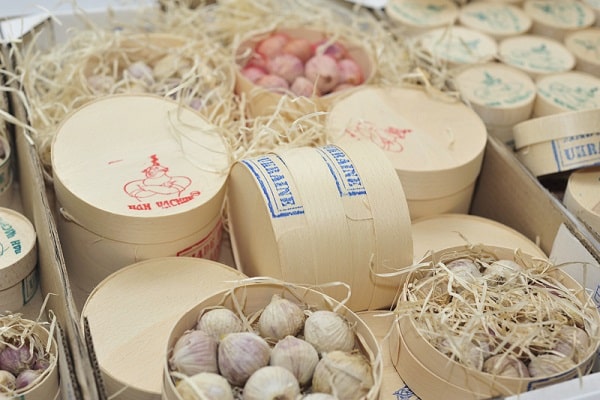
Harvesting and storage
The harvest period is determined by the arrows of the garlic and the yellowing of the lower leaves. The average duration of maturation of a culture is 100–120 days. To check the ripening of garlic, you can shake off the soil from several plants and assess the condition of the shell. If the scales are strong, the culture is ready for harvesting.
To leave the garlic for storage, you must first dry it. For the safety of the head, you need to treat it with vegetable oil and iodine, which acts as an antiseptic. After that, the heads should lie in the sun until the solution is completely absorbed. A semi-basement dark room with a cool temperature is ideal for storage. You can also leave the crop in the refrigerator or in wooden boxes.
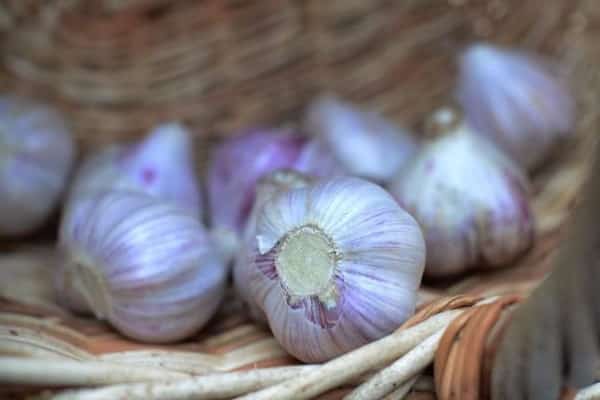
Gardeners reviews
Constantly I grow exactly Winter garlic at my dacha. The harvest is always large, I leave the main part to be stored. I encountered pests only once, when I forgot to fertilize.
One of the favorite varieties of garlic. I grow it in large quantities as it is eaten very quickly, especially in winter. Ideal for pickles and salads. It is not difficult to grow, no special conditions are required.
